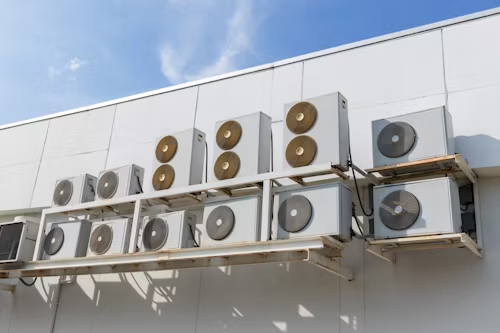
Compressed air systems power various industrial processes, from manufacturing to packaging, and they require clean and reliable air. Excess moisture in these systems can cause equipment damage, reduced performance, and higher energy costs. Refrigeration-based drying addresses this by cooling compressed air to remove water vapor, protecting system components. These devices use efficient cooling methods to maintain air quality and unit function. The article discusses how they improve compressed unit efficiency through specific technical features.
Optimization of Compressor Efficiency via Moisture Extraction
Moisture in compressed air can reduce compressor performance by causing wear and corrosion. Refrigerated Air Dryers cool the air to condense water vapor, which is then removed from the system. This keeps compressors free from water-related damage and allows them to operate at full capacity.
Dry air reduces stress on mechanical parts, supporting consistent output. Effective moisture extraction lowers the risk of system failures. This process also helps maintain steady pressure. As a result, compressors work more efficiently and reduce energy demands.
Reduction of Dew Point for Superior Air Quality
High dew points in compressed air indicate moisture, which can damage tools and products. Dryers with refrigerants lower the dew point by chilling air to remove water vapor. This produces dry air suitable for sensitive applications, such as electronics or food production.
Low dew point prevents rust and contamination in equipment. Consistent quality supports reliable unit performance. This also reduces the need for frequent repairs. Dry air ensures better outcomes in industrial processes.
Minimization of Energy Use through Cycling Technology
Compressed air systems consume substantial energy, and continuous operation increases costs. Cycling technology in these dryers adjusts cooling based on air demand, and stops when they’re not needed. This reduces power consumption compared to dryers that run constantly.
By aligning energy use with workload, these dryers improve unit efficiency. The technology maintains performance without wasting resources. It also extends the lifespan of dryer components. Energy savings contribute to lower operating expenses.
Prevention of Pressure Drops with Efficient Condensate Removal
Pressure drops in compressed air systems reduce efficiency and increase energy use. Moisture buildup can clog pipes and filters, causing these drops. Refrigerated-based dryers use automatic drains to remove liquid water effectively.
This maintains steady airflow and prevents blockages that disrupt pressure. Consistent pressure levels reduce energy waste in the system. Efficient condensate removal also protects downstream equipment. This feature supports smooth and reliable unit operation.
Stabilization of System Performance via Temperature Regulation
Temperature fluctuations in compressed air systems can disrupt performance and cause inefficiencies. Dryers that run on refrigerants do the cooling to a consistent temperature, by which they prevent overheating or freezing. This protects the device’s components from thermal stress and maintains smooth operation.
Stable temperatures ensure tools and machinery function properly. Consistent conditions also reduce wear on unit parts. This leads to fewer breakdowns and better energy use. Temperature regulation supports long-term device reliability.
Enhancement of Heat Exchanger Efficiency for Airflow
Heat exchangers in dryers are essential for cooling compressed air effectively. They transfer heat from the air to a cooling medium, reducing moisture content. Efficient exchangers ensure a steady flow of dry air with minimal energy use.
This reduces strain on the system and maintains optimal airflow. Well-designed exchangers improve overall unit performance. They also help maintain consistent pressure levels. This feature supports efficient delivery across industrial applications.
Reduction of Wear through Moisture Management
Moisture in compressed systems accelerates wear on components, reducing their lifespan. Refrigeration-based air drying manages moisture by cooling air and removing condensed water. This protects pipes, valves, and tools from corrosion and damage. Dry air reduces friction and wear in moving parts.
Effective moisture management extends equipment durability and performance. It also lowers the frequency of maintenance tasks. This contributes to consistent unit efficiency over time. By preventing moisture buildup, these dryers reduce the risk of premature component failure. Consistent moisture control supports long-term device reliability and cost savings.
Optimization of Energy Efficiency with Compressor Control
Refrigerated-based dryers with adaptive compressor control adjust cooling based on real-time air demand. This feature reduces power consumption by slowing or stopping compressors when full capacity is not needed. It ensures efficient operation without wasting energy.
Adaptive control also maintains consistent air quality under varying conditions. This reduces stress on system components, extending their lifespan. Energy-efficient operation lowers overall costs. The technology supports reliable performance in diverse industrial settings.
Refrigerated Air Dryers provide practical solutions for improving compressed air system efficiency. By removing moisture, lowering dew points, and using energy-saving technologies, they enhance device reliability. Features like cycling technology, adaptive compressor control, and efficient condensate removal reduce energy costs. Stable temperatures and effective heat exchangers make sure there is consistent performance. Advanced refrigeration designs further improve energy use. These technical features protect equipment and maintain air quality.


